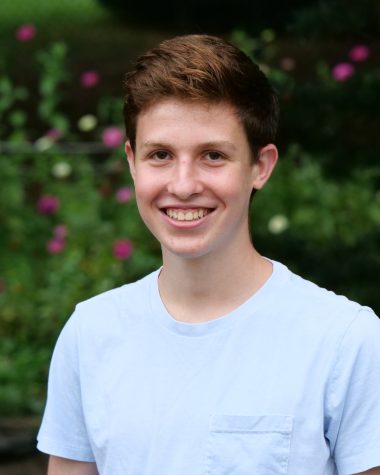Returning to the building: What to expect
A look into the protocols and schedule for the upcoming academic year
September 10, 2021
The 2021-2022 school year is kicking off with a return to a fully in-person, five day week schedule. Although there are still some restrictions and protocols to follow, in order to regain a sense of normalcy in the building, there will be numerous changes from last year.
Among the major adjustments from last year are significant changes to the schedule, curriculum and COVID-19 policies. The changes to the schedule mostly include components that were used in previous years, but were taken out last year. For example, the school day will begin at 8 a.m. and end at 3:45 p.m.. In addition, the high school will return to an A-B-C block schedule.
Some of these changes will be a challenge to students and faculty at first, as they were used to more freedom and flexibility at home.
“I’m kind of nervous to be back in person because for online school you have some leeway and you can do [asynchronous] work on your own time and relax a little bit, but going back to in-person school and starting at eight is going to be a big change, and it may be difficult for me to go back,” junior Remy Eidelman said.
However, in order to allow students to easily adjust to the more rigorous schedule compared to last year, more break and relaxation time is implemented into the daily schedule.
These longer breaks are being added multiple times throughout the day. After Z’man Kodesh Tuesdays and Wednesdays students will have an approximately 15 minute break before period 1 starts. Additionally, lunch and CT will be 55 minutes every day instead of being shorter on certain days. There is also a continuation of K’hilah from last year built into the schedule during lunch once a week.
“We were please to add a little extra time to pass after [Z’man Kodesh] and between blocks 2 and 3, and to expand the lunch and CT time to 55 minutes, so the pace of the school day is a little more relaxed. We hope this will help students and faculty to reenter school full time,” Dean of Students Roslyn Landy said.
Over the past several years, CESJDS began to consciously think about how the schedule could potentially affect the mental health of students. As the administration helps students adjust back to a more rigorous schedule, they are continuing to keep the students’ mental health in mind.
“I think it’s essential that the school is trying to help the transition back to normal school be as easy as possible for the students because when we were virtual we had a lot of time to relax,” Eidelman said. “Breaks help students to refocus and prepare for their next class, but they are also a really great moral boost, and I think it will help with a lot of students’ mental health.”
Many teachers also look forward to being in person and having greater flexibility within their classroom to teach creatively and return to old lesson plans they were unable to use on Zoom.
“I’m excited about not being on Zoom and getting to see the students and interact with them and being in the building and being with staff. Also, I’m excited to get up every morning and drive to the building instead of being in my room at home all day,” Hebrew teacher Talya Edery said. “Conducting the class is so much different than on Zoom because we can move and see each other and have an emotional connection.”
While the school is returning to a mostly normal school year and classroom environment, some COVID-19 precautions still remain necessary. Students are still required to wear masks in the building and attempt to stay spaced out in order to minimize risks indoors. However, this year, the social distancing requirement is only three feet rather than six feet. Additionally, mandatory COVID-19 tests will be conducted for all students and faculty once a week.
Although there are still some requirements to stay safe in the building now, the hope is that as the year progresses, the situation will get better and some of the rules can be lifted.
“I hope that, as the year progresses, that the COVID situation improves so that we can cut back on some of our restrictions,” Landy said. “But, there is no way to predict; we just need to wait and see.’








